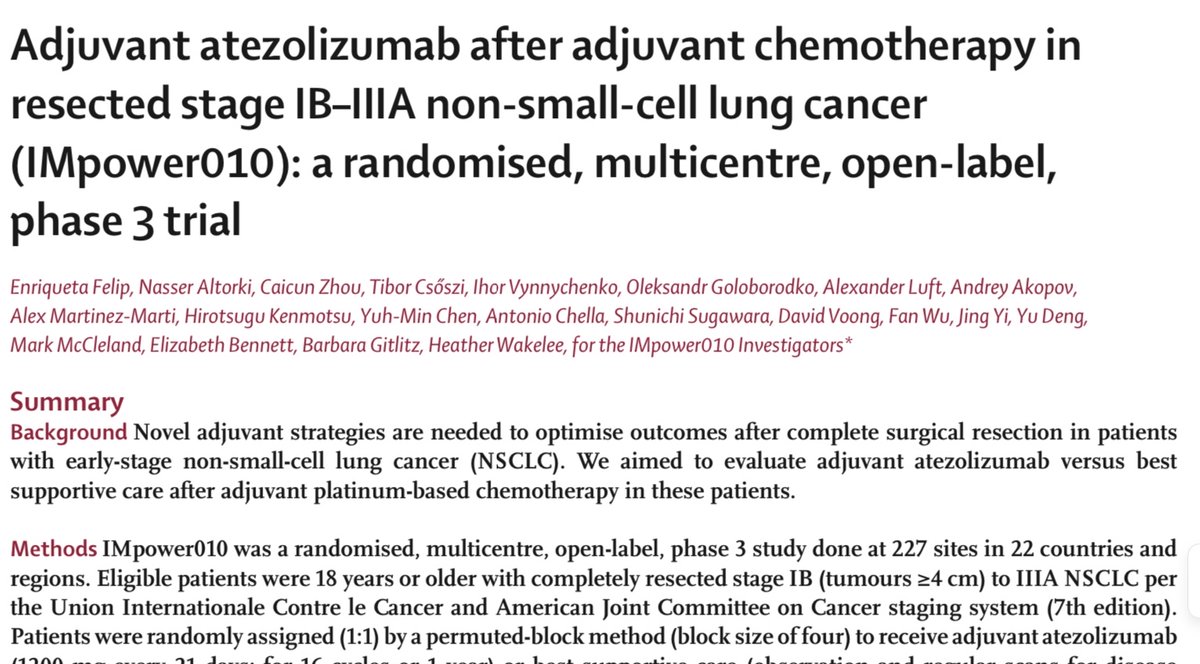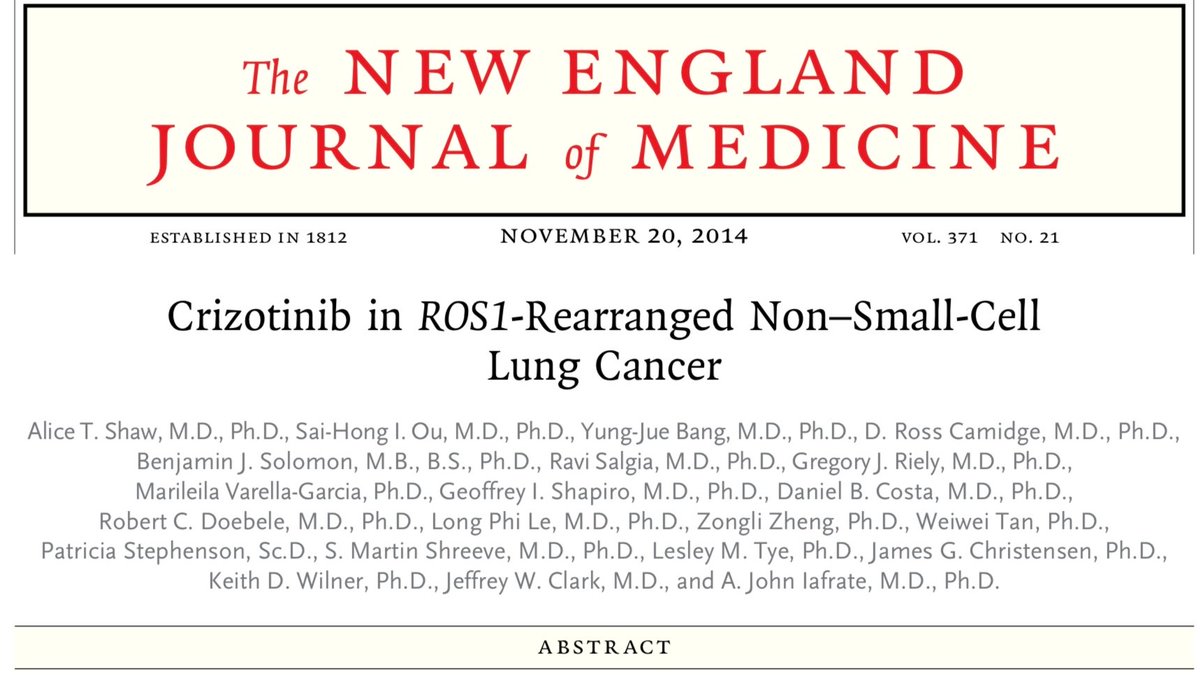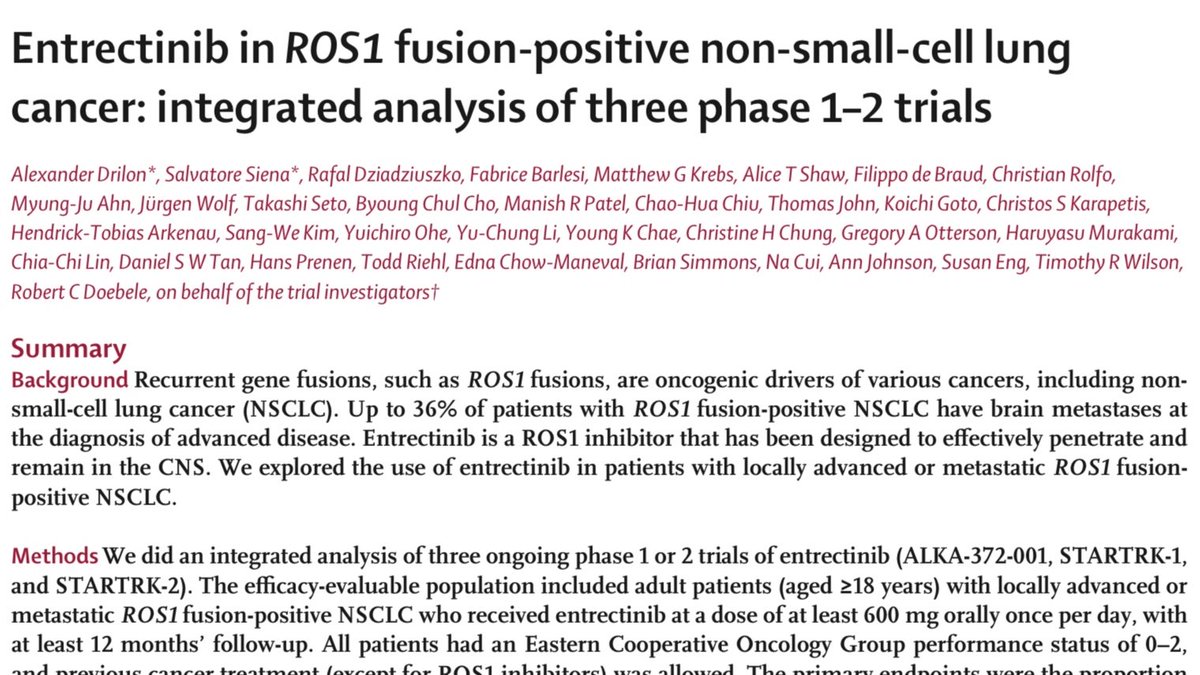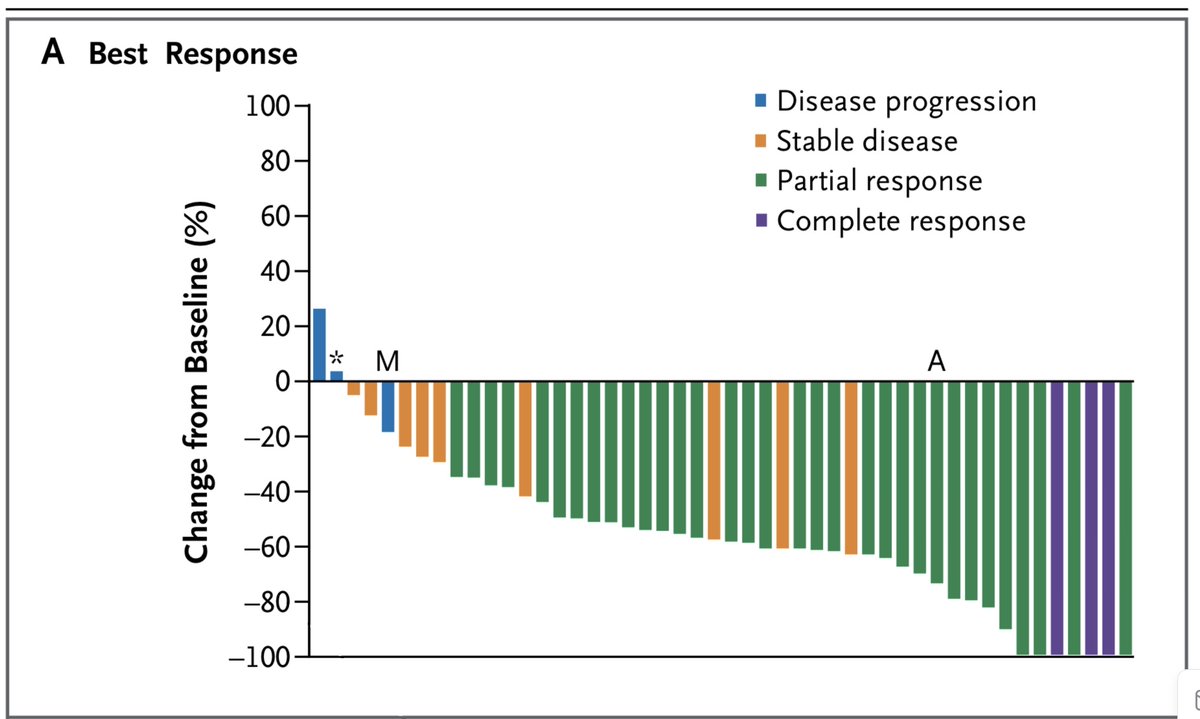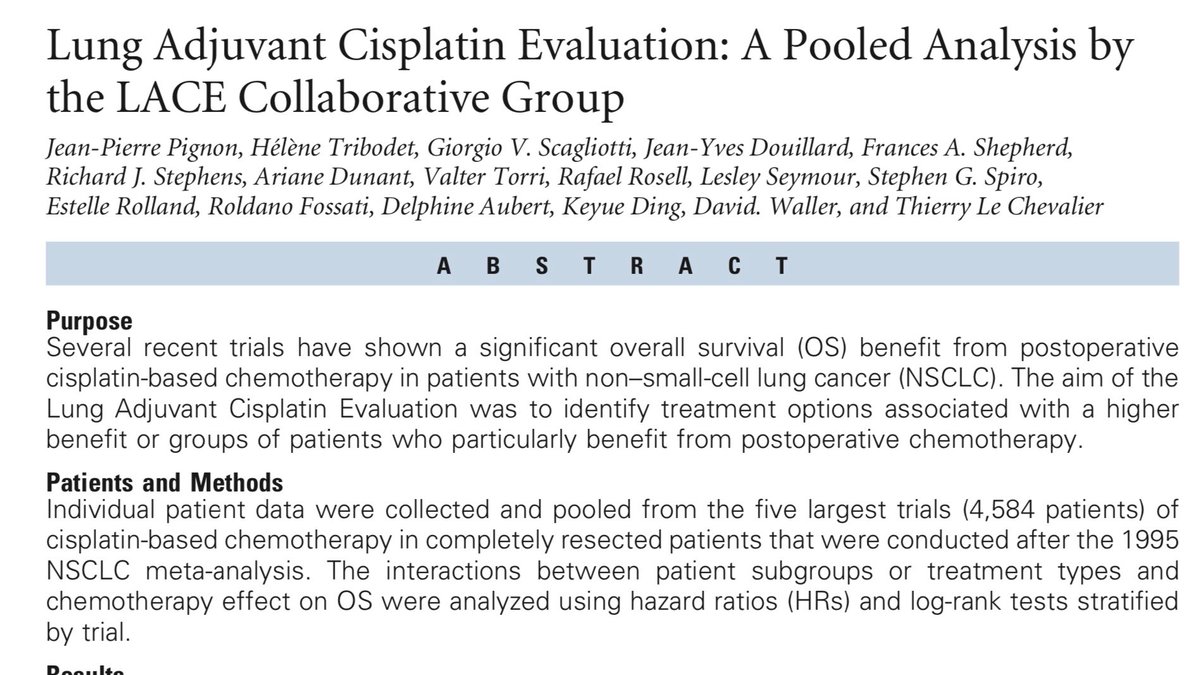
26 November: Biases and negative studies
For Lung Cancer Awareness Month #LCAM I’m going to summarize 30 important lung cancer trials over 30 days. These posts are directed at non-medical professionals, with descriptions of the results and of what makes a good trial. #lcsm 1/12
For Lung Cancer Awareness Month #LCAM I’m going to summarize 30 important lung cancer trials over 30 days. These posts are directed at non-medical professionals, with descriptions of the results and of what makes a good trial. #lcsm 1/12
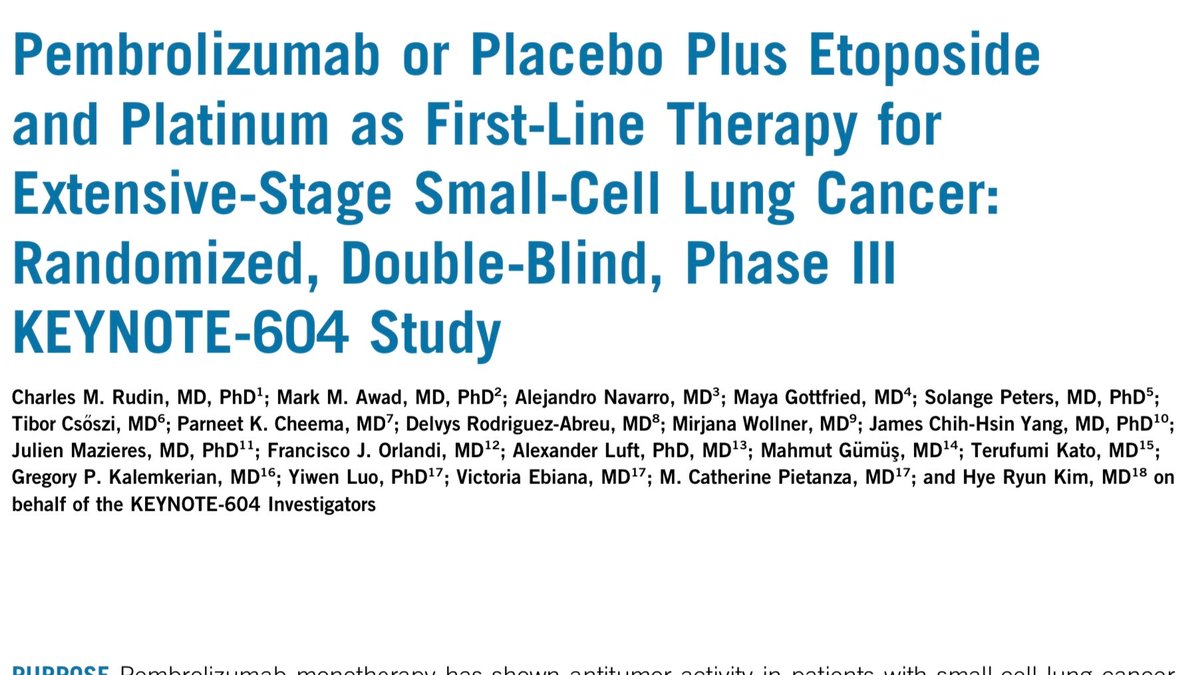
Today we are returning to small cell lung cancer, a disease that we previously considered on 10 November.
We discussed how limited-stage disease can be treated with curative intent chemoradiotherapy, while extensive stage disease is treated palliatively with chemotherapy. 2/12
We discussed how limited-stage disease can be treated with curative intent chemoradiotherapy, while extensive stage disease is treated palliatively with chemotherapy. 2/12
Like many other cancers, treatment of small cell lung cancer has been altered by immunotherapy. There are clinical trials of durvalumab (22 Nov) and atezolizumab showing that adding them to chemo improves survival modestly. This evidence is reflected in most treatment guidelines.
Far less often discussed or referenced is today’s trial, which randomized people with extensive stage cancer to chemo plus either pembrolizumab (Nov 13,16) or placebo.
The design is identical to other trials. The major difference between them is that this trial is negative for OS
The design is identical to other trials. The major difference between them is that this trial is negative for OS
The trial enrolled 453 people. There was a complex analysis scheme (Nov 23) with co-primary end points of PFS and OS, tested with one-sided tests at a significance of 0.025. Due to this complex arrangement, overall survival would be declared positive if p=0.0128. 5/12
The trial met its PFS target, although the benefit seems small, and restricted to a subgroup of patients. It did not meet its OS target, keeping in mind the statistical design of the study. 6/12 


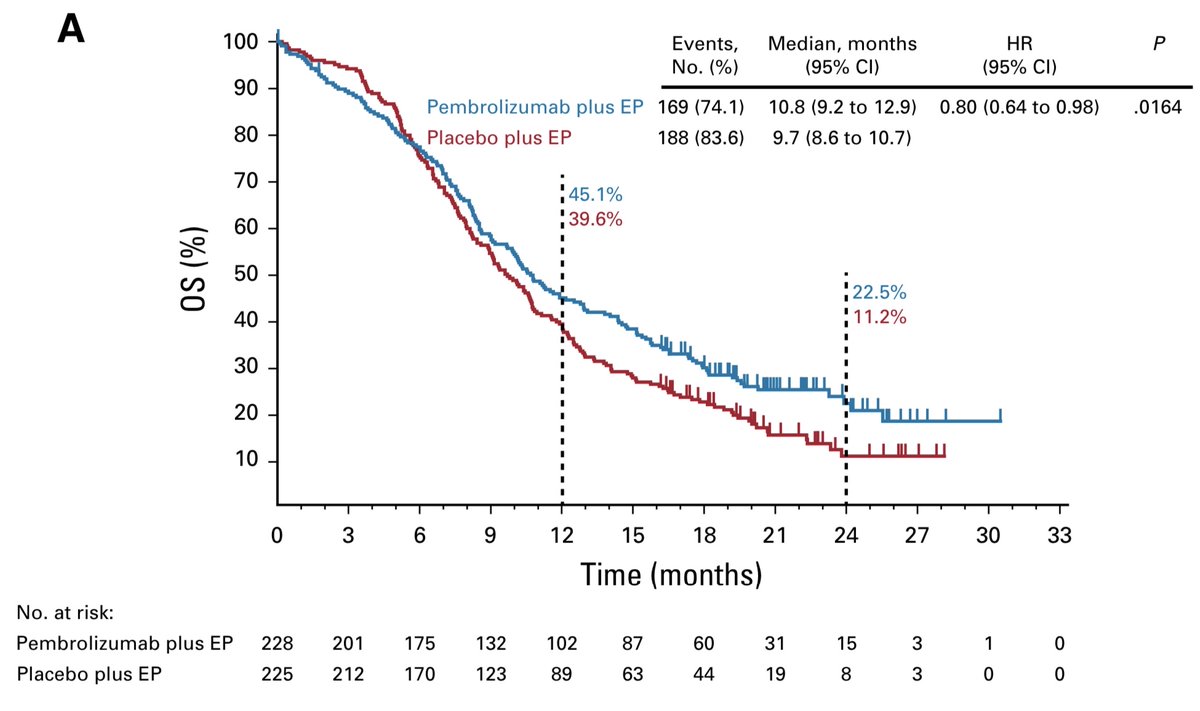
Something I find interesting is that the activity of pembrolizumab doesn’t actually look that different from the other two. Below I have put the PFS curves for atezolizumab and pembrolizumab side by side. The curves could almost be superimposed. 7/12 


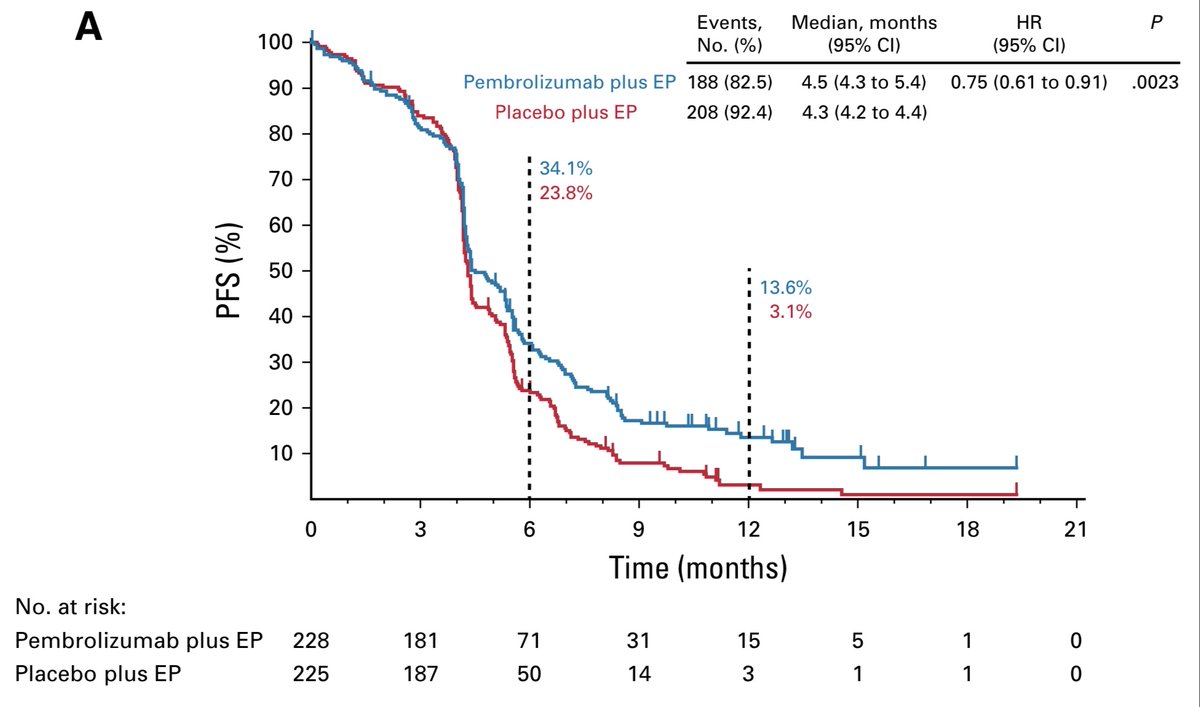
Here is the same side-by-side comparison with the OS curves. Again they are very similar, though for some reason the pembro arm does poorly the first few months and never quite recovers. 8/12 



Partly, this shows the arbitrary nature of statistical significance. Two studies with very similar results can be interpreted as having contrary outcomes if one falls on the good side of the p-value, the other on the wrong side. 9/12
It also illustrates our preference for positive studies, which manifests in
1 Publication Bias (negative studies less likely to be published & are published in lower-prestige journals)
2 Confirmation Bias (we pay more attention to results we like, or that confirm our assumptions)
1 Publication Bias (negative studies less likely to be published & are published in lower-prestige journals)
2 Confirmation Bias (we pay more attention to results we like, or that confirm our assumptions)
When a field has conflicting studies it’s not the best approach to just memory-hole the negative ones. Any trial suggests a range of possible results. With marginally positive and marginally negative studies, whatever the true impact of IO in small cell, it is probably very small
Tomorrow we’re going to look at something of a unique study in the lung cancer canon, and talk about Quality of Life as an endpoint. See you then! 12/12 

• • •
Missing some Tweet in this thread? You can try to
force a refresh


